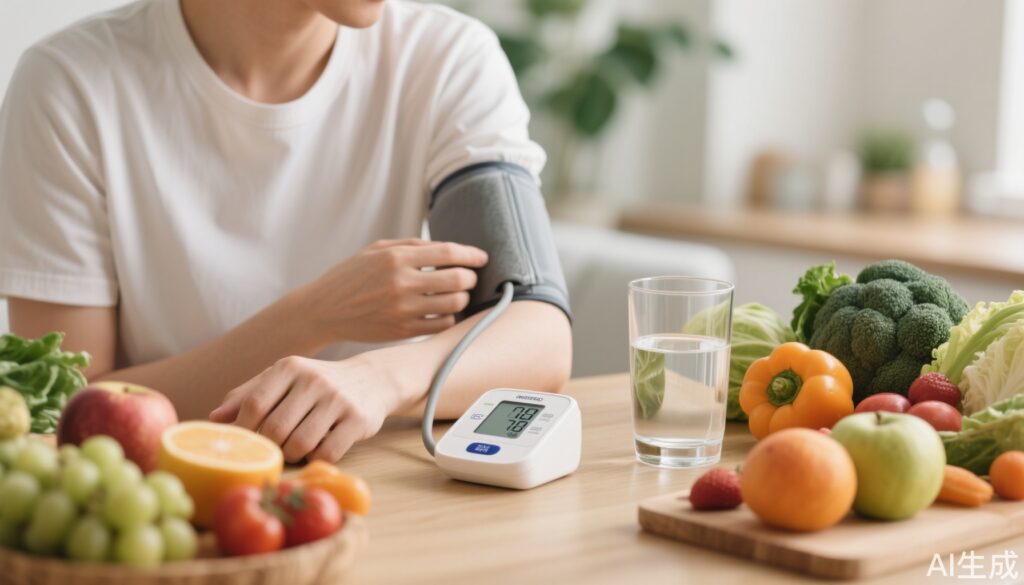What is Hypertension?
Hypertension, or high blood pressure, occurs when the force of blood against artery walls is consistently too high. It is often called the ‘silent killer’ because it may show no symptoms until it causes significant damage to the heart, brain, or kidneys. Blood pressure is measured in millimeters of mercury (mmHg) and categorized as normal (<120/80 mmHg), elevated (120–129/<80), or hypertensive (≥130/80 mmHg).
Common Causes and Risk Factors
Hypertension can result from a combination of genetic, environmental, and lifestyle factors. Key contributors include:
– A diet high in sodium and low in potassium
– Sedentary lifestyle and obesity
– Chronic stress or anxiety
– Excessive alcohol consumption
– Family history of hypertension
– Age over 65
– Underlying conditions like diabetes or kidney disease
Recognizing Symptoms
While many people with hypertension remain asymptomatic, some may experience:
– Headaches
– Shortness of breath
– Nosebleeds
– Dizziness
– Chest pain
These symptoms typically appear when blood pressure reaches dangerously high levels (e.g., >180/120 mmHg), requiring immediate medical attention.
Diagnostic Methods
Accurate diagnosis involves multiple blood pressure readings taken at different times. Ambulatory blood pressure monitoring (ABPM) may be used to track fluctuations over 24 hours. Additional tests like electrocardiograms (ECGs) or urine analyses help assess organ damage.
Lifestyle Modifications
Non-pharmacological interventions are foundational in managing hypertension:
1. **Dietary Adjustments**: Adopt the DASH (Dietary Approaches to Stop Hypertension) diet, emphasizing fruits, vegetables, whole grains, lean proteins, and low-fat dairy while reducing sodium intake to <2,300 mg/day.
2. **Physical Activity**: Engage in at least 150 minutes of moderate-intensity aerobic exercise weekly, such as brisk walking or cycling.
3. **Weight Management**: Losing 5–10% of body weight can significantly lower blood pressure.
4. **Stress Reduction**: Techniques like mindfulness meditation, yoga, or deep-breathing exercises can mitigate stress-related hypertension.
5. **Limit Alcohol and Tobacco**: Men should consume ≤2 drinks/day, women ≤1 drink/day. Smoking cessation is critical to prevent arterial damage.
Medical Treatments
If lifestyle changes are insufficient, antihypertensive medications may be prescribed. Common classes include:
– **ACE Inhibitors** (e.g., lisinopril): Relax blood vessels by blocking angiotensin-converting enzyme.
– **Beta-Blockers** (e.g., metoprolol): Reduce heart rate and cardiac output.
– **Calcium Channel Blockers** (e.g., amlodipine): Prevent calcium from narrowing arteries.
– **Diuretics** (e.g., hydrochlorothiazide): Eliminate excess fluid to reduce blood volume.
Your healthcare provider will tailor treatment based on comorbidities and individual response.
Monitoring and Follow-Up
Regular blood pressure checks are essential to track progress and adjust treatment. Home monitoring devices offer convenience and can help identify white coat hypertension (elevated readings in clinical settings). Share results with your doctor to ensure optimal management.
Prevention Strategies
Proactive steps to prevent hypertension include maintaining a healthy weight, avoiding processed foods, and staying hydrated. Community programs and workplace wellness initiatives can further promote public health.
Conclusion
Hypertension is a manageable condition with early detection and comprehensive care. By combining lifestyle changes, medication (if needed), and regular monitoring, individuals can significantly reduce their risk of complications and improve long-term outcomes.


